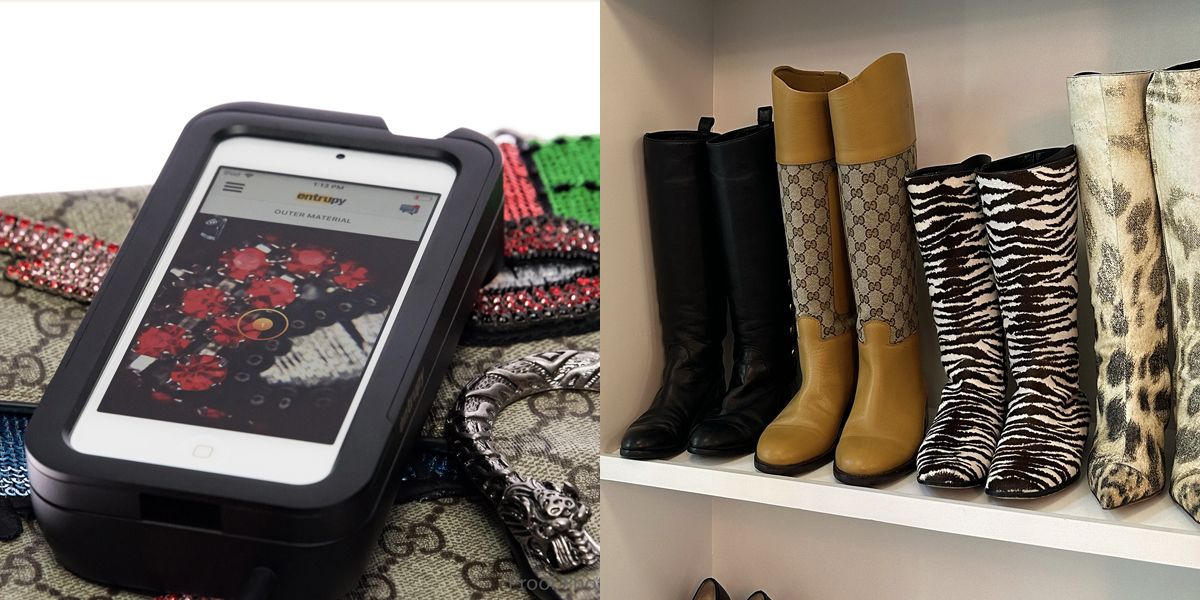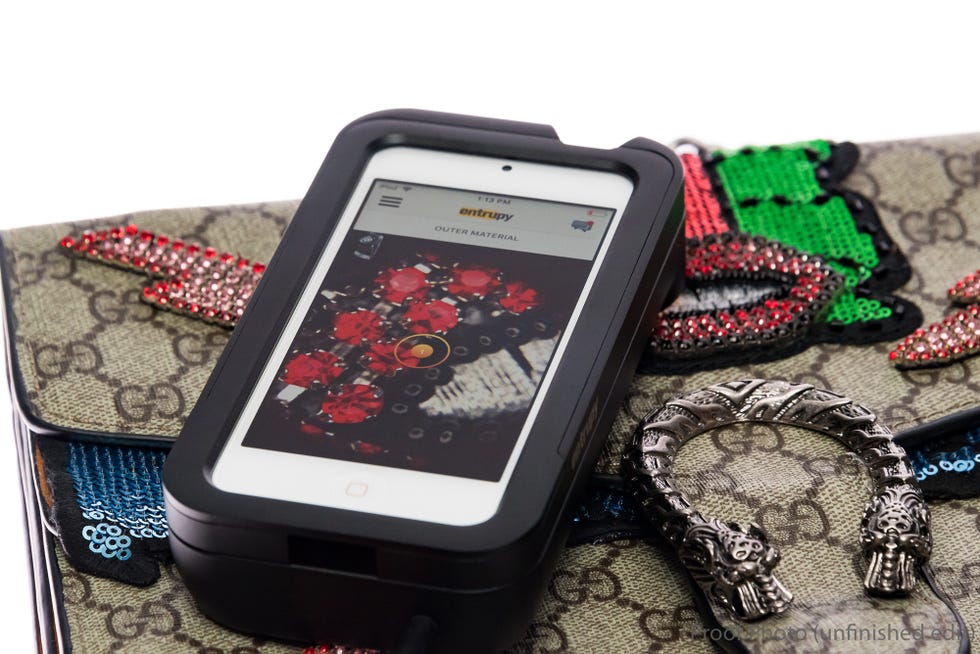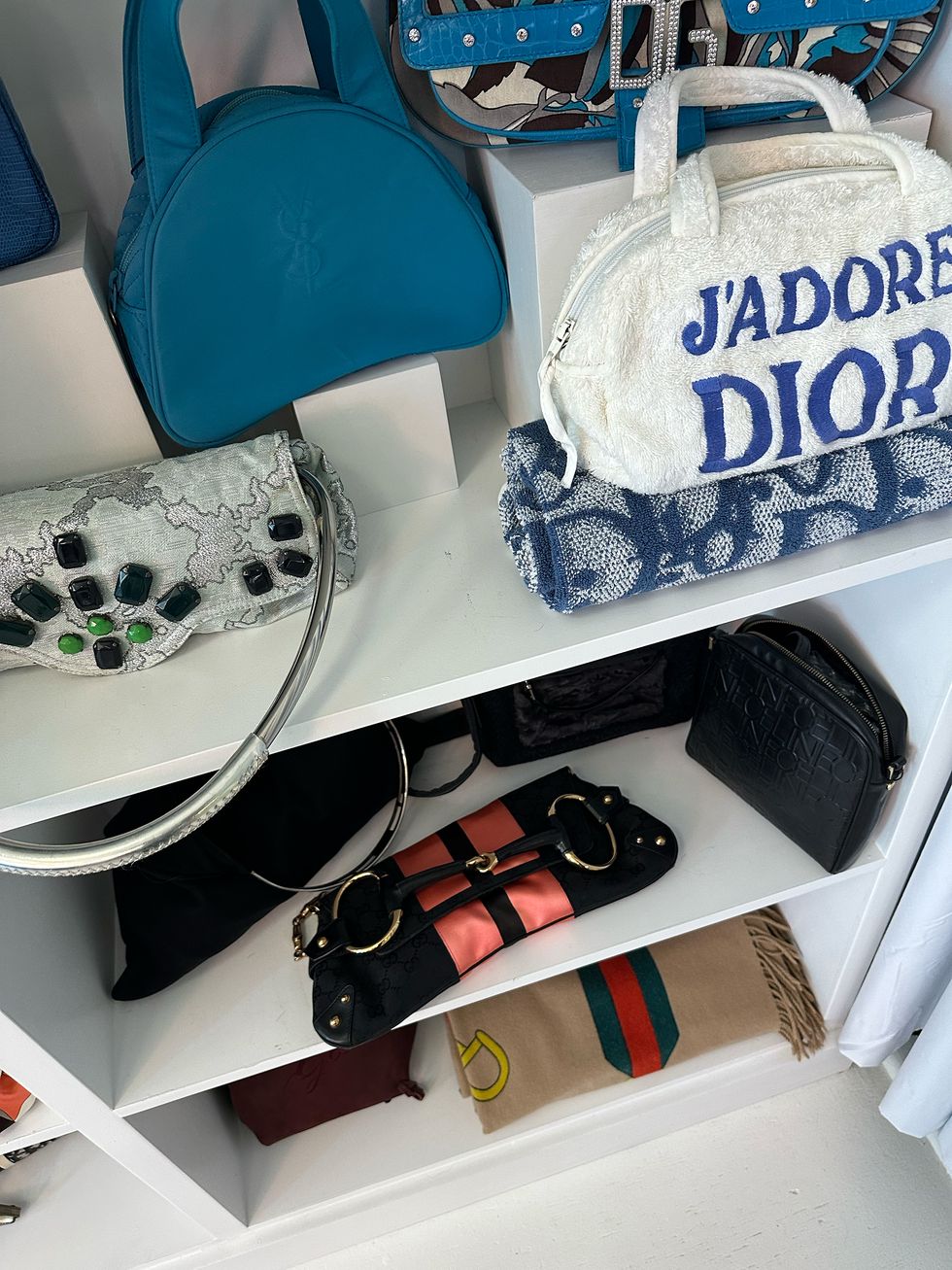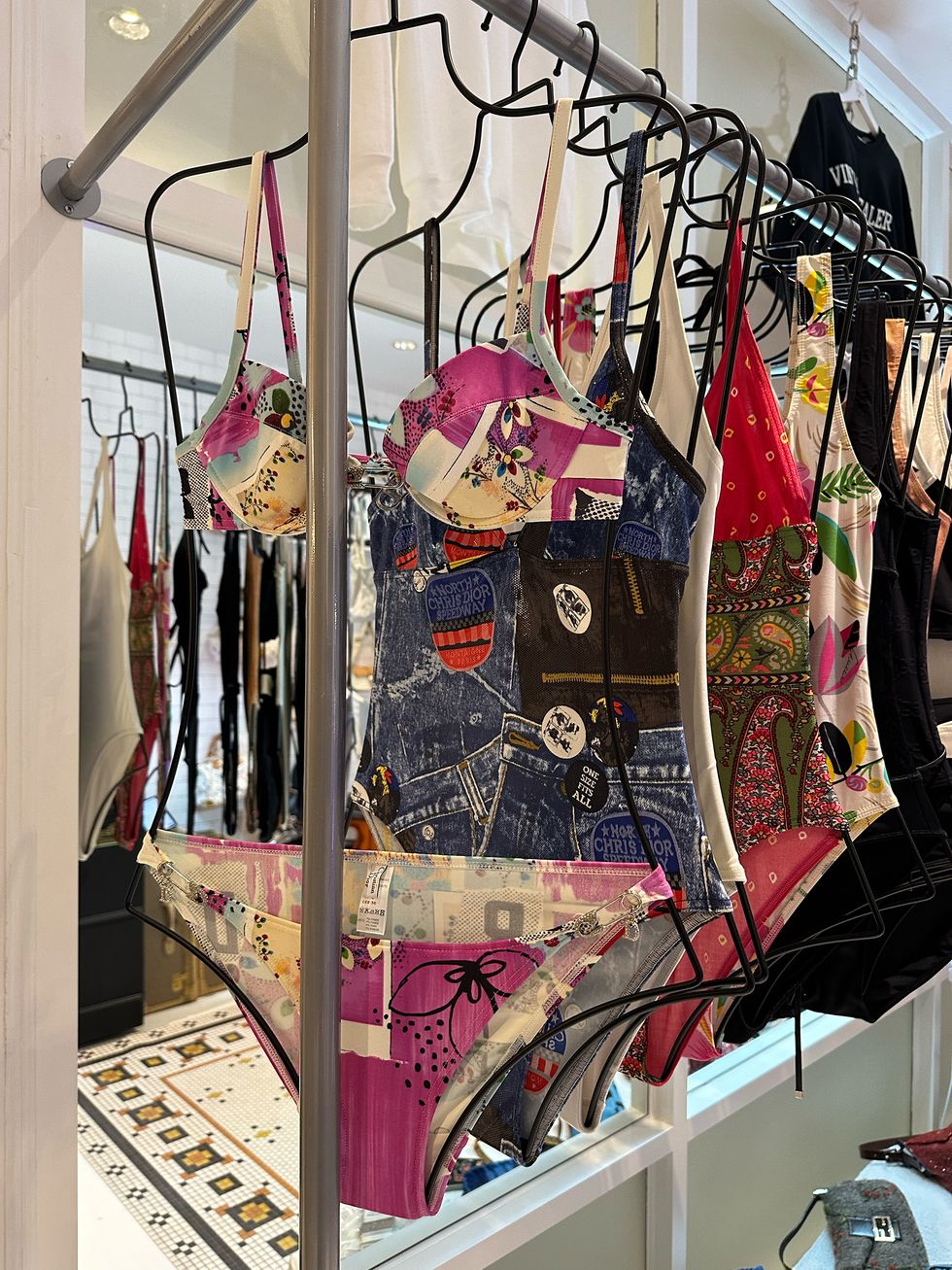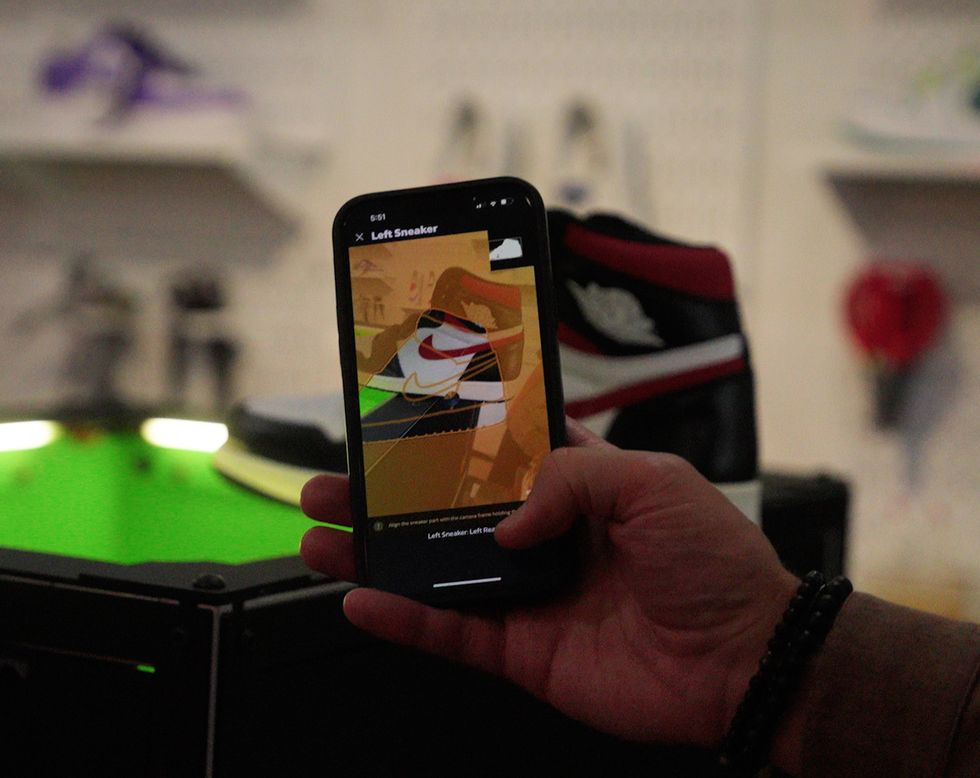Products You May Like
Just the mere mention of artificial intelligence within the fashion industry ignites a certain fight-or-flight response. It tends to be seen as a negative thing, with models being replaced, or shoppers being tracked by these advancements. Very seldom do we acknowledge the benefits of working alongside technology for the better good of, well, everyone. But the secondhand market proves just how helpful AI companies like Entrupy are to the authentication process of luxury goods.
Founded in 2012, Entrupy is currently only available to resellers and enterprises. However, the LVMH-backed company makes it clear it is by no means a member of the fashion industry, but instead a tech organization using its findings from the last decade to determine whether or not luxury items are authentic. It works with a host of retailers like MatchesFashion and Threads Styling to authenticate items from brands like Louis Vuitton and Chanel. More recently, Entrupy became the official authenticator for the newly launched TikTok Shop’s luxury bag selection. The fast-learning AI technology has a 99.1 percent accuracy rate, as it can spot things that the human eye cannot.
Brittany Blanco-Bird, co-founder of the vintage retailer Treasures of NYC, calls the relationship between luxury brands and the AI-powered technology, “a fine balance” that, when done right, yields more accurate results than they would separately. “If you only rely on one, you’re just doing yourself a disservice,” she says. “I can’t speak on behalf of other vintage resellers, but we’re not doing our job as a brand if we don’t know those things ourselves, too, and should be able to tell customers if an item is real–Entrupy is the final stamp that brings it home.”
According to Blanco-Bird, it’s hard to gain the confidence of customers as a small brand. She recalls thinking that, early on, clients would have to just “take her word” that she and her team had spent hundreds of hours researching her company’s inventory, recognizing that some shoppers wouldn’t want to assume the risk. Until she earned their trust, she wanted the extra help that Entrupy could offer. “We needed to partner with something tried-and-true so that people know we did our homework,” she explains. “It’s a double layer of protection as far as we’re concerned. The more layers of protection that we can offer consumers, the better.”
So, how does Entrupy actually work? It starts with the company’s software, which will prompt you to submit images of the products from every angle imaginable. For bags, the technology uses microscopic lenses with high resolution. This gives a closer look at everything from the curved edge of the designer plaque and logo to the grains of leather used and the serial number. These specifics are then compared to the information that has been gathered over time, which can then be attributed to a certain factory or batch number to confirm its authenticity or not. To authenticate sneakers, the system uses a macro lens to capture the shoes, referring back to the authentic styles and high-quality dupes they have as references in the Entrupy database.
The process itself is relatively quick. Upon scanning the item and submitting all the requested information into Entrupy’s system, you’ll be given the verdict on your item’s authenticity within minutes. However, depending on the style and rarity, it could take a bit longer. Regardless, once it’s been deemed genuine, you’ll receive a certificate of authenticity via email, which is traceable for the duration of its life cycle on the market.
“The whole point of doing this is to add trust and make it verifiable as a third party,” Entrupy co-founder Vidyuth Srinivasan tells ELLE.com. “It’s the consumer having the certainty that this is not just [one] person saying that it’s authentic, there’s also a third party that’s not invested in the transaction, certifying it. It’s all verifiable and trackable over time.”
This is especially important as fakes become more sophisticated. Earlier this year, it was reported by Yahoo! News that Cartier would no longer be authenticating its bestselling LOVE bracelets. The counterfeits have become so good that the luxury brand isn’t able to establish the iconic designs to be genuine and, as a result, members of the secondary market, like San Francisco-based antique shop Muerta & Company, aren’t willing to deem them genuine. “Most people will not even purchase them as authentic anymore unless you have the original receipt, paperwork, and evidence that you’re the original owner or you were gifted from the buyer at Cartier. It’s very difficult to prove that they’re real or not.”
Accessories are easily the most affected category, which is why, as of right now, Entrupy only authenticates designer handbags and sneakers from big brands like Nike and Adidas. “We always keep an eye out for new categories where we see a high risk,” Srinivasan says. “[Because] in order to beat the counterfeiters, you need to think like them, meaning you go where they go, and they go where the sales are high and there’s no regulation.” He’s referring to the more than $1.7 trillion dollars worth of unauthenticated products currently circulating the market that’s gone under the radar. “We want to make sure that buying luxury items is a smooth experience,” he says. “This integration allows us to continue our mission of protecting both businesses and consumers from purchasing counterfeit items.”
“At the end of the day, it’s a wonderful tool,” Blanco-Bird says. “But it’s only as good as the information that we feed it. As long as the correct data is being entered, the smarter and quicker the system becomes.”

Shelby Ying Hyde is a Brooklyn-based shopping and fashion contributor BAZAAR.com, with bylines on The Zoe Report, Teen Vogue, Essence, Nylon, Elite Daily and more. Prior to entering the editorial space, she worked at luxury e-commerce giants Net-a-Porter and Moda Operandi on the product editorial team, where she gained an extensive understanding of the luxury market as it pertains to shopping and engaging customers in a digital space. Follow @theshelbyying on Instagram for shopping advice, sale updates, and tips for building a well-rounded wardrobe.
